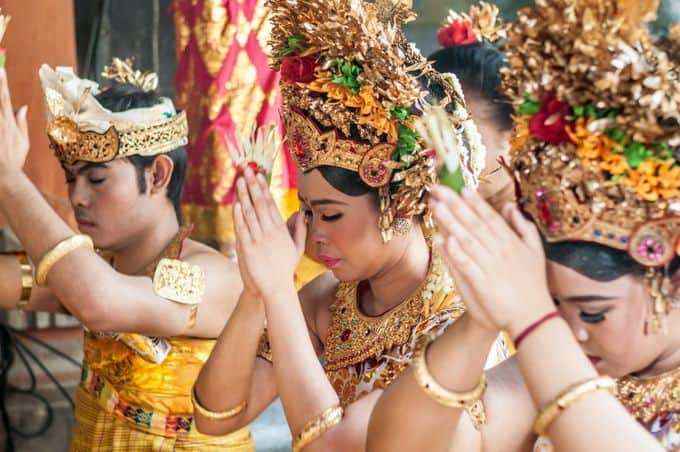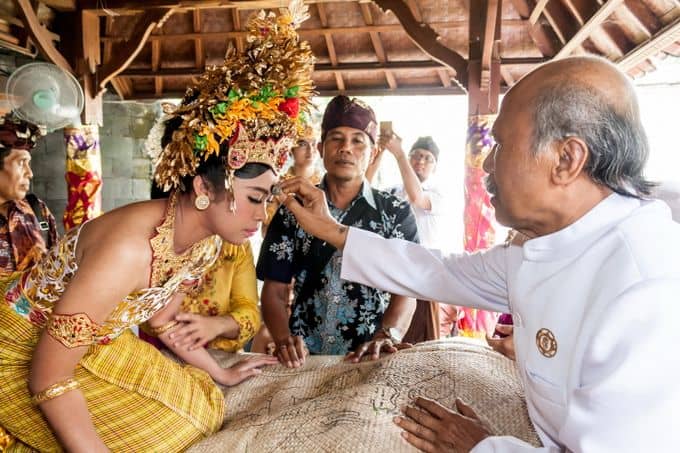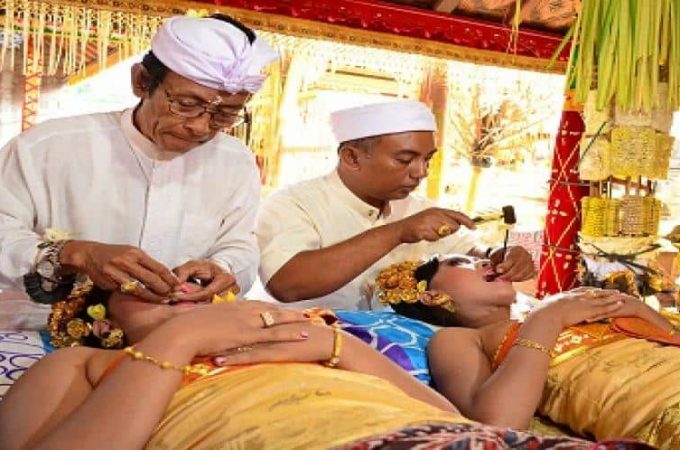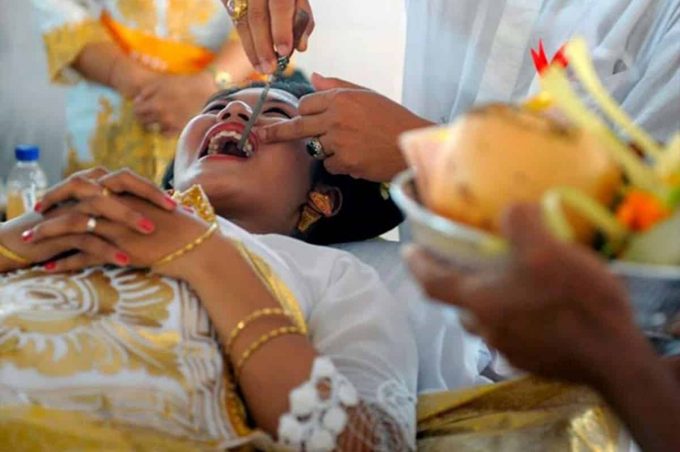The Balinese Celebrate Life through Ceremony & Daily Rituals. It is said there is never a day in Bali without a ceremony and if you include all the life cycle rites (baby ceremonies, puberty rites, weddings, cremations, Temple festivals), then this is probably true.
Daily Rituals
The day of a Balinese starts with an offering on his doorstep, in front of shops, at intersections, on the reception of the hotel or even in busses and taxis. Small baskets made of braided palm tree leaves, filled with flowers, leaves, fruits and sweets are offered, to please the Gods and to soothe the demons.

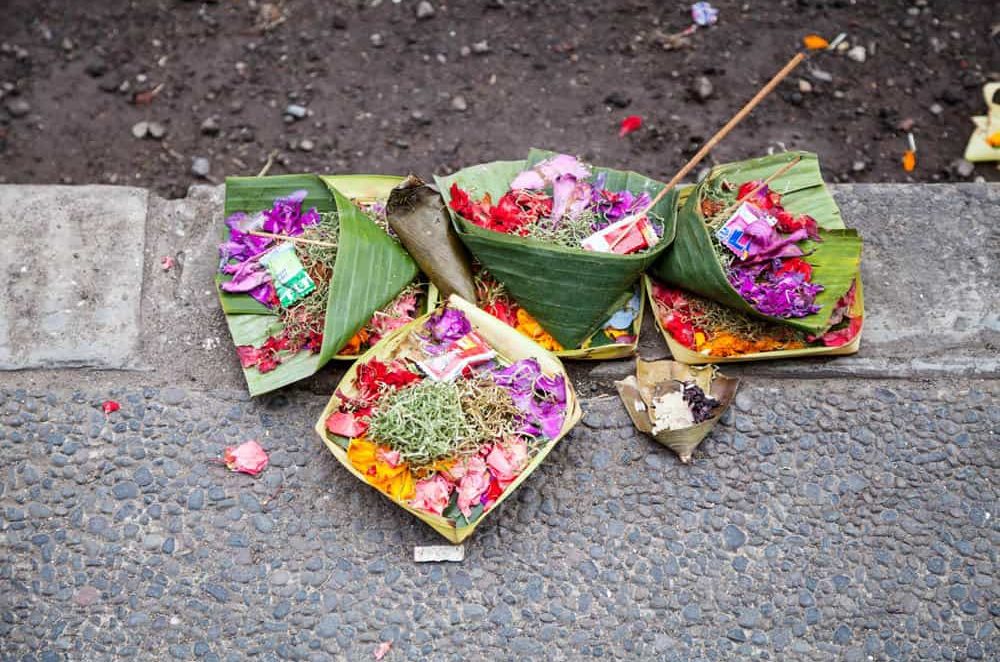
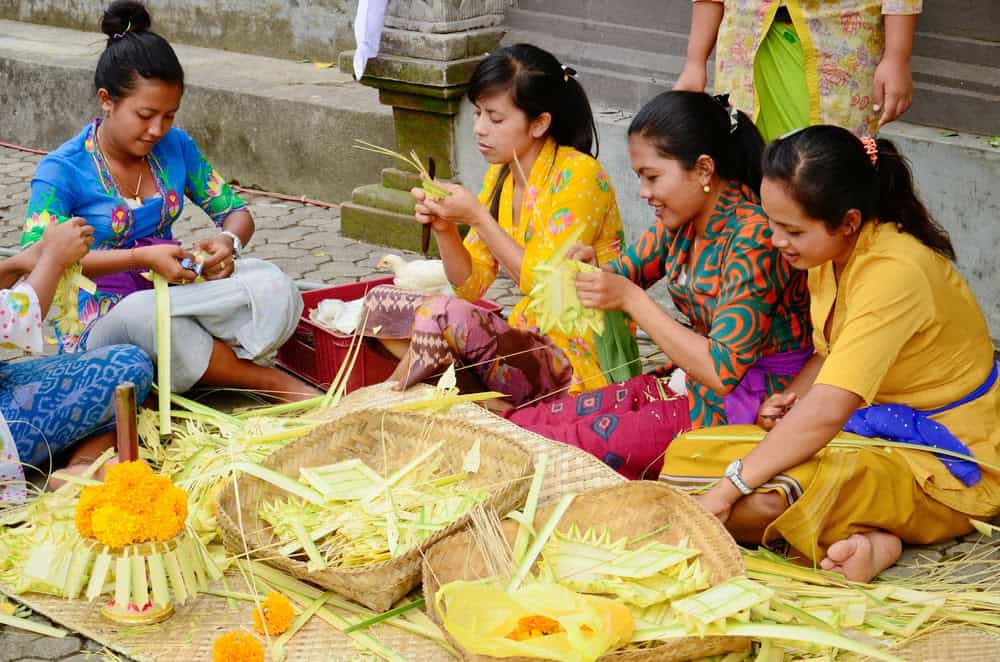
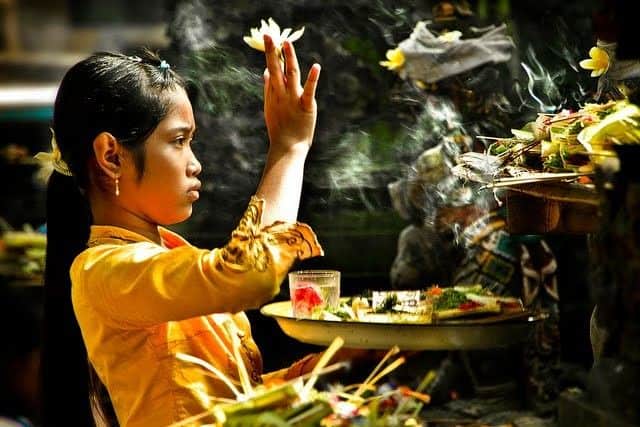
Odalan
Odalan
Every 210 days (one Balinese year) the anniversary of the inauguration of a temple is celebrated. At the many temples there are many Odalan every day everywhere in Bali. Until the early morning hours of the following day offerings are carried to the temple, blessed and brought back home during the day.
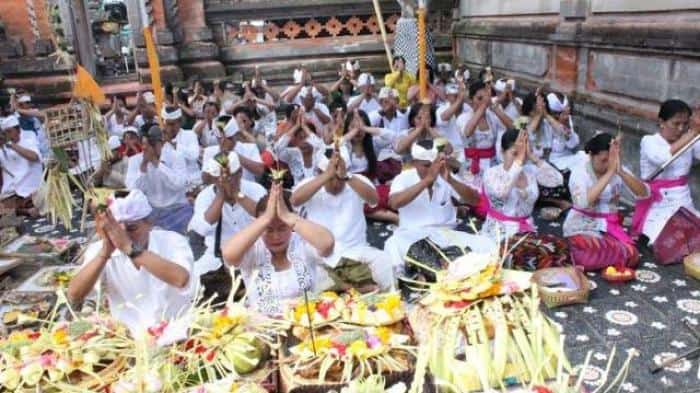
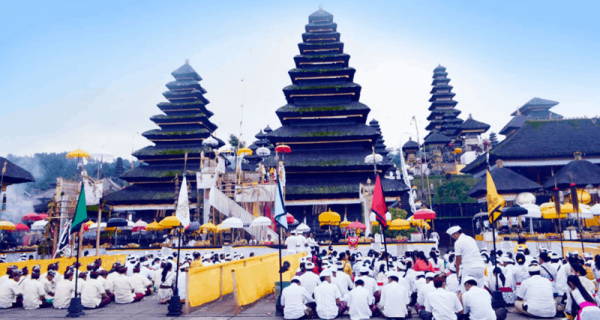
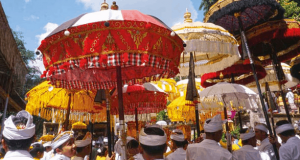
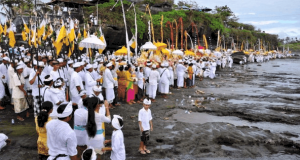
Galungan and Kuningan Day
The most elaborate temple-festival in Bali is also celebrated yearly (every 210 days). It lasts more than a week and ends with Kuningan.
On Galungan the highest God Sang Hyang Widi descends, with other Gods to the earthly temples, to be celebrated and to linger on all the offerings. After 10, on Kuningan, days they return to Heaven. At that time streets are decorated with Penjor (bamboo sticks) and houses with Lamaks (palm leaf plaiting).
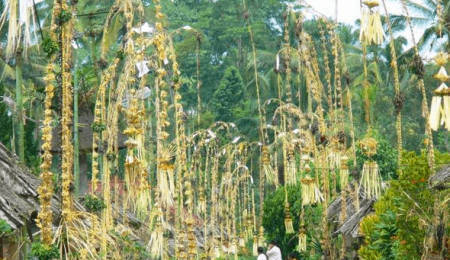
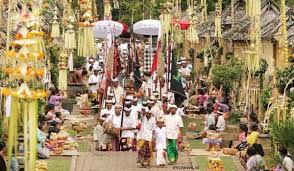
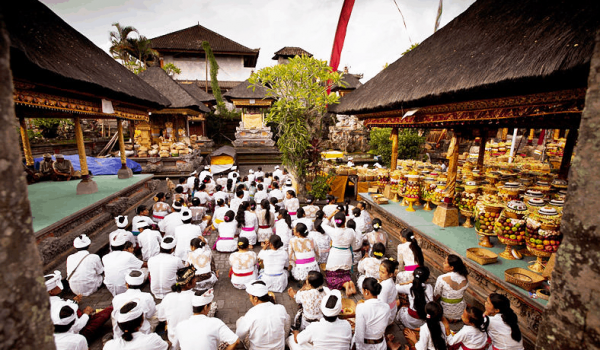
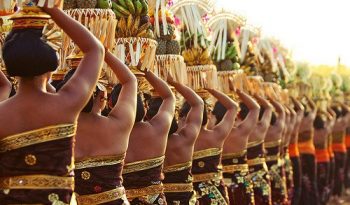
Nyepi Day
The Balinese New Year is on spring-equinox. On that day reigns absolute silence, that means no traffic and no one is working. You are not allowed to lit a fire and everyone stays at home.
The week before Balinese people will do Melasti ceremony, every village has different time. The day before, they offerings are given to the Spirits of the underworld, to elicit the demons and spirits and scare them off with loud music(gongs, rattles and drums). Kids and Teens handicraft demon figures, the so called “Ogoh-ogoh”, with which they walk through the village and on the night before Nyepi they burn them on the village square.

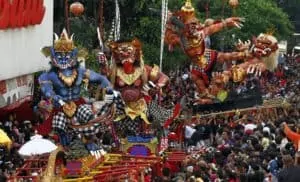
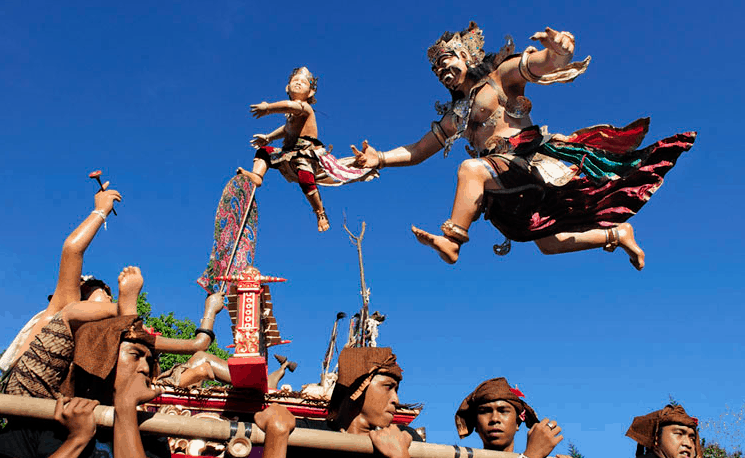
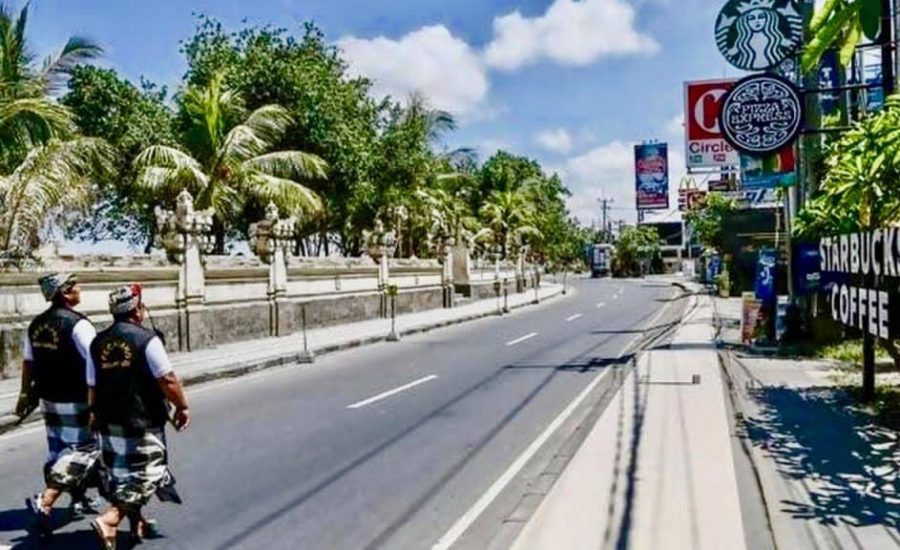
Palebon Ceremony
Ngaben ceremony also known as Pitra Yadyna, Pelebon or cremation ceremony, is the Hindu funeral ritual of Bali, Indonesia. A Ngaben is performed to release the soul of a dead person so that it can enter the upper realm where it can wait for it to be reborn or become liberated from the cycles of rebirths. The Balinese Hindu theology holds that there is a competition between evil residents of the lower realm to capture this soul, and a proper cremation enhances the chance that it may reach the upper realm.
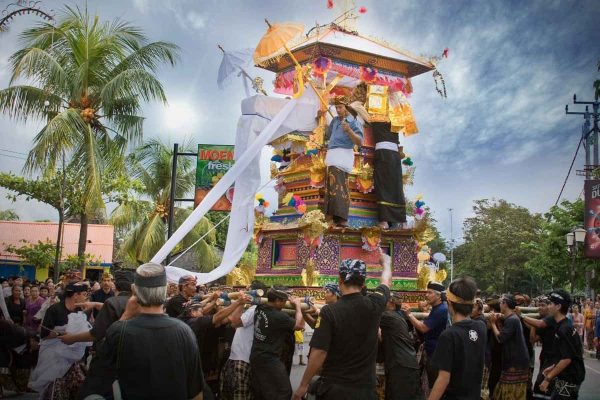
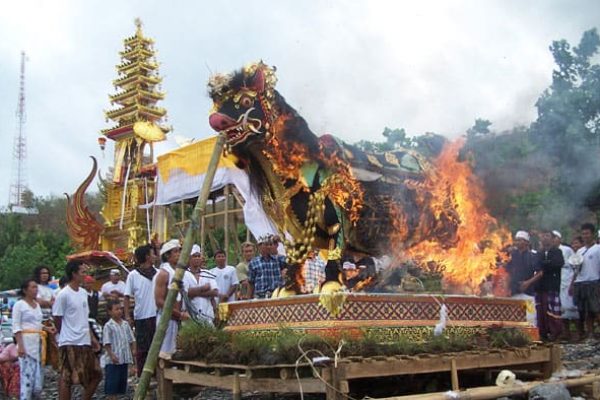

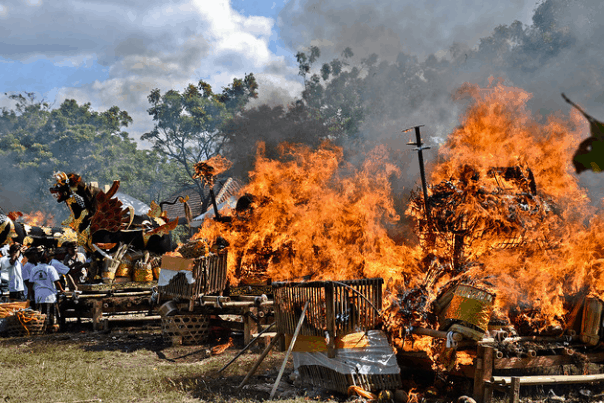
Mepandes Ceremony
Potong gigi, also known as mesangih or mepandes is a form of ritual body modification of adolescents, typically teenagers, in parts of Bali that involves the filing of the canine teeth. Traditional Balinese belief states that “protruding canines represent the animal-like nature of human beings”, the purpose of the ritual is to sever ties with these animal instincts and show others that the individual is old enough to marry. Considered a generational ritual, parents of adolescents performing it consider it their “final duty” in being a parent before their child becomes an adult. Reasons adolescents take part in the ceremony are mixed, as they must take into consideration the impacts of globalisation with traditional Balinese ritual.
